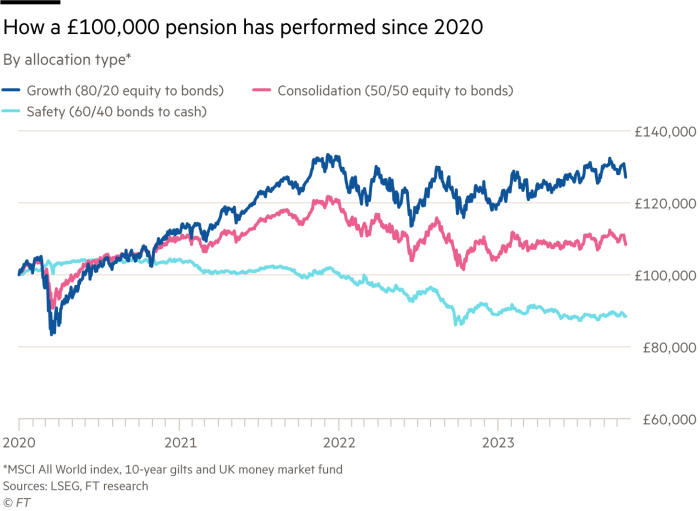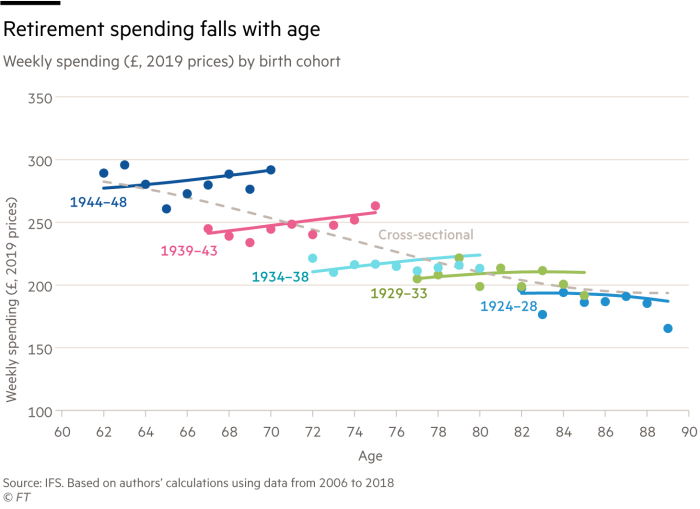Unlock Editors Digest for free
Roula Khalaf, editor-in-chief of the FT, selects her favorite stories in this weekly newsletter.
Hindsight is always in high definition for investors. This sense of clarity will be uncomfortable for anyone who has unwittingly invested in the bond market in recent years. Yields soared to a 15-year high on government bonds and capital values fell.
This is particularly shocking for savers in defined contribution pension schemes. Savings companies may, in some cases, have transferred their nest eggs into bonds at the worst possible time.
This could apply where money was paid into so-called lifestyle funds by default or by choice. These embody a unique approach to asset allocation. Lifestyle funds offer young savers high exposure to stocks with the aspiration of long-term growth. Older clients are oriented towards bonds in order to secure their earnings.
I see many clients who have four or five pensions from their working life and usually two of them are lifestyle, said David Hearne, chartered financial planner.
Mature savers who were pushed into bonds at record prices now risk finding that their lifestyle fund will no longer fund the retirement lifestyle they had planned.

The difference could be huge. A simplified lifestyle fund aimed at a younger saver, designed by Lex and split 80/20 between stocks and bonds, is said to have grown 30% since the start of 2020. A matching fund for an older counterpart, split 60% /40 between bonds and cash, would have made a loss of 12 percent.
Default allocations to lifestyle funds are a necessary evil for pension managers responsible for thousands of people, said Laith Khalaf at AJ Bell. But he adds: The one-size-fits-all approach is inconsistent with the wider range of retirement choices available today.

Pension reforms in the UK in 2015 gave greater flexibility to retirees. Before that, they mostly had to buy annuities. Bond-rich annuity funds have covered this liability as retirement nears. Since 2015, most DC retirees have used flexible plans to withdraw cash or income.
This extends the investment period, which argues in favor of greater exposure to stocks for those entering active retirement. The little-recognized danger for savers is therefore that savings companies could divert their money too soon into low-yielding lifestyle funds.
Compliance departments will put pressure on them to reduce regulatory risks with a security-first approach. But the security bonds offer when interest rates are volatile has recently proven illusory.
The Lex team wants to know more about readers. Please tell us what you think about lifestyle funds in the comments section below.
#Defined #contribution #pensions #lifestyle #ordered #stock
Image Source : www.ft.com
